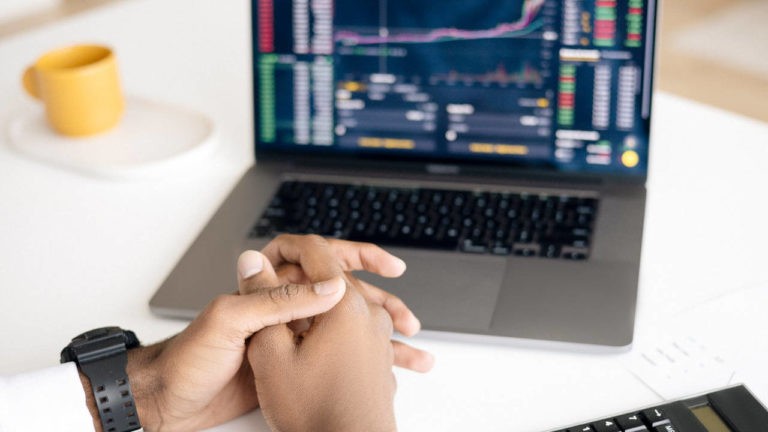We all know that costs of goods have increased over time. For instance in 1940 a gallon of milk cost $.50, a gallon of gas $0.15 and a loaf of bread was $0.08. But in 2015 those same items cost $2.72, $1.99 and $2.38. We call this increased cost of goods over time inflation.
Economists formally define inflation as the increase of the general prices of goods and services over a sustained period of time. As it increases the buying power of your dollar goes down, getting you a smaller and smaller percentage of a good or service.
There is no consistency to the value of a dollar – or any currency for that matter – when there is inflation.
There is an inverse relationship between your purchasing power –your ability to purchase real tangible goods – and inflation. As it increases the purchasing power of your dollar – your ability to get things – decreases.
Let’s look at an example. If we say that inflation is at 3% annually and buying a Coke costs $1 then in one year this change would increase the cost of that coke to $1.03.
So as you see inflation causes your ability to buy things to decrease over time – your money just won’t buy the same things as it did in the past.
Causes of Inflation
The actual causes of inflation are debated by economists but two theories as to why it occurs are generally accepted.
There is the “demand-pull” theory. This type usually occurs in growing economies, and is caused by supply and demand. In other words there are too few goods for the demand and this drives prices up.
The other generally accepted theory is the “cost-push” theory. This is based on increased costs to the business producing goods. Things that can increase for companies include wages, taxes or increased cost of importing raw materials.
When a company has increased costs, they must increase prices to maintain their profit margin.
Inflation Effects
Though in the public mind inflation is often seen as a bad thing this isn’t necessarily the case.
Inflation can effect individuals in different ways. Whether the change is anticipated or comes unexpectedly is also a determining factor as to whether inflation is seen as being bad.
For instance if inflation occurs at a rate that what most people expected it to then we can compensate for the increase and the cost of inflation isn’t all that high. Examples of such compensation include adjusting interest rates or having cost of living increases built into wages.
However, when the change is unanticipated problems can arise. Consumer spending can decrease hurting economic output and those on fixed incomes can suffer as their standard of living due to decreased spending power diminishes.
Inflation and Wages
Though people will always complain about the rising cost of goods, it should be remembered that wages should be increasing commensurately.
Inflation is only really dangerous when its rise outpaces the similar rise in wages.
It is also a sign of growth. Little inflation or even deflation can be the sign of a weakening economy.
How inflation affects you depends on your personal situation as well as the overall economy.
Though inflation is generally perceived by the public as negative, in a good economy a moderate level of inflation is beneficial to an economy’s health. In this article we are going to look at how moderate inflation is one indicator of a healthy and growing economy.
The Economic Ecosystem
We can look at economies as ecosystems where various parts depend on and are influenced by one another. Though this is a simplification, we can say there are these parts to the economy ecosystem or loop
- Supply
- Demand
- Price
- Employment
- Utilization
- Investment
- Profit
- Wages
Measuring Inflation
It is a difficult task for economic statisticians to measure inflation.
To measure inflation economists come up with a “market basket”. This basket consists of all the goods and services they believe that the average person would buy. The importance or weight of each item in this basket would be based on the actual way that people spend their money.
For instance we might say that an average person spends on average:
40% of their income on housing
10% of their income on transportation
10% of their income on food
You get the idea.
The amounts are tallied and then looked at from year to year to see how they increase or decrease over time.
This doesn’t of course take into account the fact these baskets are subject to change. They can change based on newer models of goods, different sizes of houses, new improvements in electronics to name a few.
So making the determination of the cost of things and inflation is not completely black and white and is in fact quite nuanced.
The Consumer Price Index (CPI)
The above baskets, when compared over time, are used to find something called a price index. You can think of these price indexes as if they were large surveys.
The benchmark price index inflation guide in the United States is the Consumer Price Index, or CPI. Here’s how that works:
The US Department of Labor and Statistics contacts thousands of retailers, service providers, rental units and medical providers to obtain pricing information on thousands of items. The Department records about 80,000 items per month which represents a sample of prices paid by consumers. These price quotes are used to track price changes in the CPI.
The Consumer Price Index tries to provide a comparison of a consistent base of products from year to year.
The CPI focuses on products that consumers buy and use daily. For instance, the CPI captures things like the price of your bread, milk, shampoo and a haircut.
Economists view the CPI as the one of the most important economic indicators of the US Economy. Most people are affected by the CPI personally and it has a direct impact on investors, particularly investors on a fixed income.
Let’s say someone is retired and put all their savings towards buying an annuity. If this annuity doesn’t adjust for inflation and the cost of goods goes up then he or she will be in a rough spot.
Using Inflation and Consumer Price Index
In order to track inflation, economists use buckets of goods and services that an average person would spend money on.
They take the cost of these goods and services in the buckets and track them over time to determine how their cost goes up or down. Using these figures, they calculate inflation.
The use of these buckets create what are known as price indices. The Consumer Price Index is one of the most important of these economic indicators in the United States.
Moderate Inflation is Good
Let’s look at a good economy and how the various parts – in particular the subject of this article moderate inflation – influence each other.
In a good economy, employment is up and because employment is up, more business are looking to hire and employees have more negotiating power. There are fewer people looking for work.
This has an effect on wages which will also go up. As wages go up people, have more purchasing power and this increases demand for goods and services.
This increased demand increases utilization and companies will have to increase production if they are in manufacturing or output if in a service industry.
Demand and utilization will drive profits up. In addition, companies may be forward thinking and wish to expand to take advantage of the good economic conditions and therefore invest in hiring, more factories etc.
They may also raise prices to increase profit.
Moderate Inflation Means a Healthy Economy
A company in a good economy raising prices to increase profit is where our moderate inflation indicator comes in.
There is more demand so there is more production and therefore the company can viably raise prices. Now, raising prices will have a slightly negative impact on demand and this makes the inflation moderate as the negative impact offsets the price increase.
The overall effect, however, is more production, more investment and more supply. Increased supply will have a slight adverse effect on price helping to moderate it. Companies are going to feel more optimistic, they’ll feel they have room to grow with moderate inflation.
As they invest more and build or increase capacity in existing facilities, they will need to expand their workforce.
This expanded workforce will have more ability to negotiate and get higher wages.
Higher wages will allow more consumer activity.
This then goes through the cycle or ecosystem creating demand, increasing profit utilization and investment.
Prices again can be raised to increase profit and are offset by decrease in demand and increased supply.
And the cycle continues.
Moderate Inflation Continues Growth
So we can see that a moderate level of inflation – not an out of control amount – is part of a healthy thriving economy.
Increasing the cost of goods and services over time at a moderate pace helps fuel the feedback loop between companies and employees.
Employees increase their wages which allows them to increase their spending and standard of living.
This is fed back into companies via demand.
Moderate inflation spurs this growth forward.
Stagflation
So we know that a moderate level of inflation is a good thing in an economy and it is interrelated with all the components in our economic ecosystem.
What the heck, then, is stagflation?
Stagflation is a combination of stagnation in an economy at the same time there is inflation.
Stagflation can happen because of over-regulation or strange regulation by a government. But the classic example of stagflation is a supply shock.
In this scenario we have something like an emergency or an embargo – in fact this is exactly what happened in the 1970’s in the US with oil- where the supply of something drops dramatically.
If, like in the 70’s, our oil supply were to suddenly drop away there would be an immediate increase in price for that commodity.
This price not only affects the money you pay for your personal transportation but also affects other industries. For example, food and any good or service where transportation is involved or energy is generated. The consequence is pervasive throughout the economy, and we see an increase in prices throughout.
This price increase begins to ripple through the economy. Demand has an inverse relationship to price and as price goes up demand goes down.
As demand goes down, so do utilization, investment, and profits.
Profits get hit and then we see a corresponding decrease in employment and wages. This then depresses demand even further.
That shock to the system is like a virus that spreads throughout the economy.
Hyperinflation
As the name implies, hyperinflation is inflation at an insanely high level.
Hyperinflation is caused when a government begins to create currency on an unprecedented level. They are creating currency because they do not have any other way of generating revenue.
This leads to prices going up and then because prices go up the government needs to print even more money to get the same goods and service or to pay workers.
Imagine an inflation rate of not 5-10% annually – but per hour.
People don’t want to hold currency – the longer you hold it the less valuable it is. People look to hoard assets in a desperate attempt to hold onto goods like food.
Hoarding leads to a loss of supply which leads to even higher prices.
A classic example of hyperinflation occurred in post-World War I Weimar Germany. The German government began producing more currency because of the large reparations they were required to pay to France and other countries.
In a span of only six years, from 1918 to 1923, the paper mark in relation gold went up a trillion-fold. The people of Germany found the money to be more beneficial to burn and heat their homes
So, we see that while a moderate level of inflation needs to exist in a good economy. But when you get inflation of a different kind – stagflation or hyperinflation – your economy is in danger of collapse.













